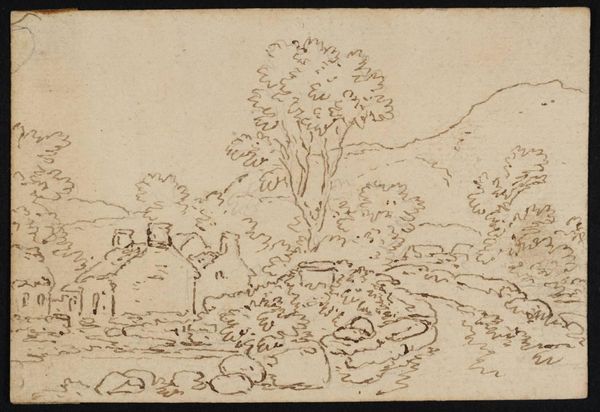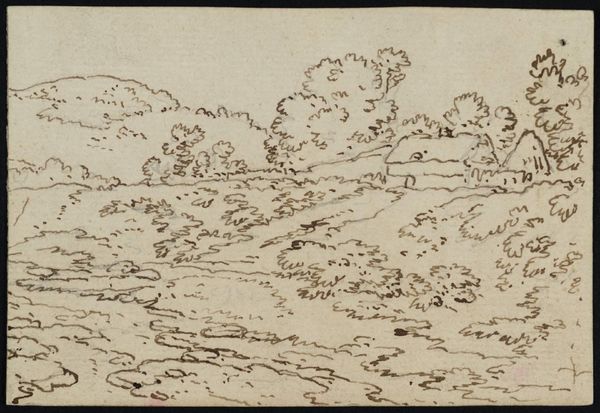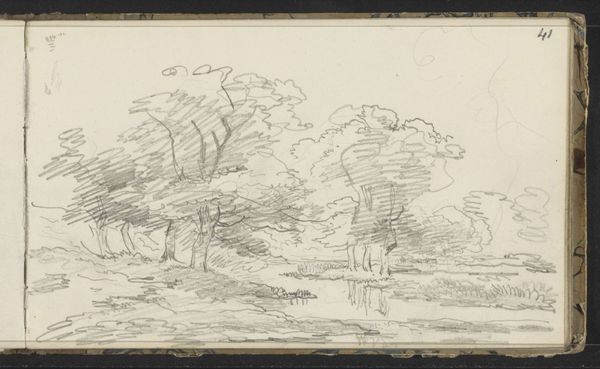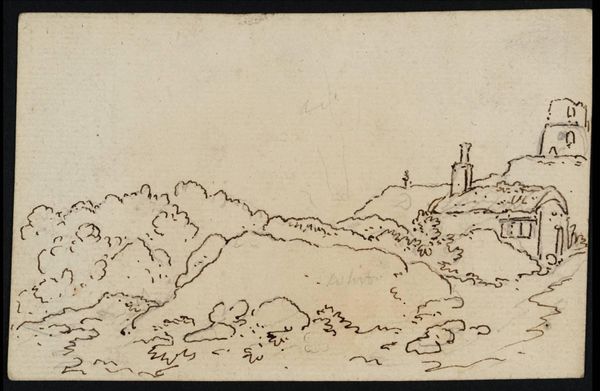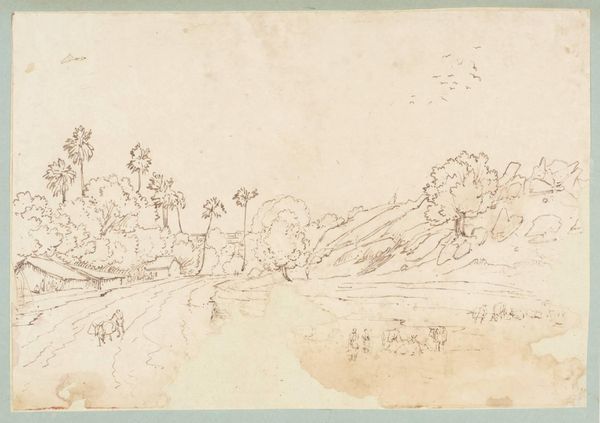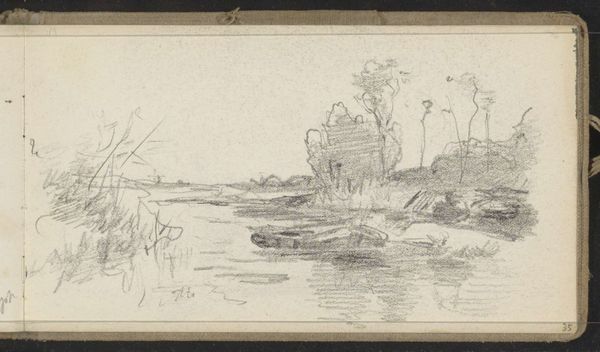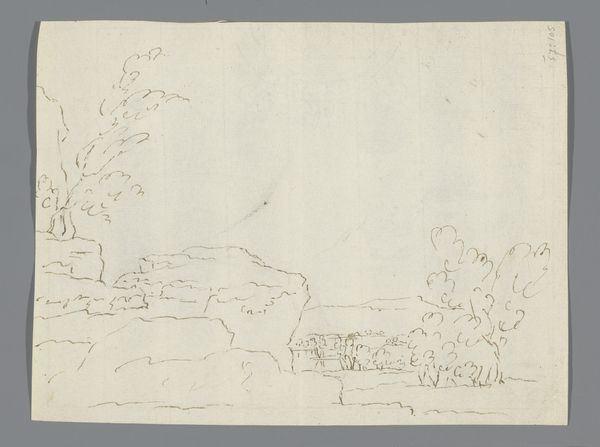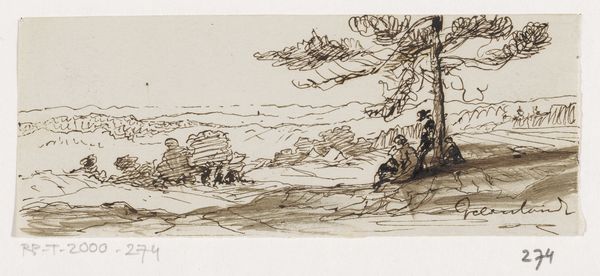
Study of a Lime Kiln at the Foot of St Vincent’s Rock, Avon Gorge c. 1786 - 1800
0:00
0:00
Dimensions: support: 80 x 124 mm
Copyright: CC-BY-NC-ND 4.0 DEED, Photo: Tate
Editor: This is Philip James De Loutherbourg’s "Study of a Lime Kiln at the Foot of St Vincent’s Rock, Avon Gorge." It’s a small sketch, only about 8 by 12 centimeters, and it feels quite raw and immediate. What can you tell us about the context of this sketch? Curator: De Loutherbourg was fascinated by industry and the picturesque, so the lime kiln becomes a subject worthy of artistic attention. Lime kilns were essential for mortar production, reflecting the era’s infrastructure development. This sketch highlights how artists began integrating industrial sites into the landscape, viewing them as part of the evolving socio-economic picture. Editor: So, it’s not just about the pretty scenery? Curator: Exactly. It's about how industry reshaped perceptions of beauty and the artist's role in documenting that change. What do you think the public's reaction might have been to such imagery? Editor: I guess it made them more aware of the changing world around them. I've learned a lot. Curator: Me too! It’s a great example of how art reflects and shapes our understanding of social and industrial progress.



